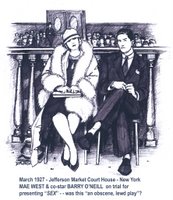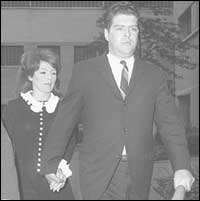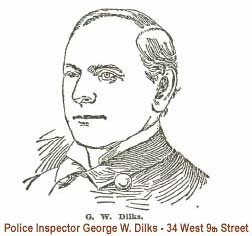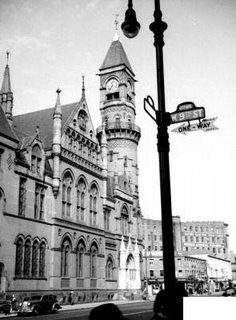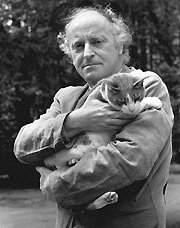Dr. Sanger's arrest: April 1929

• • 15 April 1929
• • New York City
From MARGARET SANGER's DIARY: Early in the morning of April 15, 1929, the telephone in my apartment rang, startling me. I was pretty nervous, having been up all night with Stuart, who had mastoiditis. His temperature was running high, and he was suffering with terrible, indescribable pain.
• • I took off the receiver. "Hello. This is Anna. The police are here at the clinic." Briefly she related how they had descended without warning, stamped into the basement, and were at the moment tearing things to pieces. . . . With this meager information pounding through my brain I hastened to the street, hailed a taxi, and urged the driver to go as fast as he could to West Fifteenth Street. The shade to the glass door was pulled down; the door itself was locked. I knocked and a plain-clothes man of the Vice Squad opened it.
• • "Well, who are you??"
• • "I am Mrs. Sanger and I want to come in. . . ."
• • Only a few moments ago a visiting physician from the Middle West asked one of the nurses whether we ever had any police interference. "Oh, no," the nurse cheerfully replied. Those days are over now.
• • Stocky Mrs. Sullivan, head of the City Policewomen's Bureau, was superintending the raid in person. Her round, thickset face might have been genial when smiling, but was terrifying when flushed with anger. She was giving orders to her minions in such rapid succession that it seemed impossible to keep pace with them. I tried to talk to her, asking why she had come and what it was all about.
• • "You will see," said Mrs. Sullivan, and went on directing the patrolmen who were removing books from shelves, pictures and diagrams from walls, and sweeping out the contents of medical cabinets. In their zeal, I noticed they were seizing articles from the sterilizers, such as clothes and medicine droppers, having no sinister significance whatsoever. They were also gathering up the various strange, weird devices patients had brought us to inquire as to their efficacy, and which we exhibited as curios. . . .
• • It ran through my mind that dire misfortune could follow in the way of being blackmailed by anyone obtaining the records.
• • I requested Mrs. Sullivan to show me her search warrant, and saw it had been signed by Chief Magistrate McAdoo. . . .
• • One of the policemen scooped up all the name cards and stuffed them into a waste basket to be carried off as evidence.
• • This was a prime violation of medical ethics; nothing was more sacred to a doctor than the confidences of his patients. Immediately Anna telephoned Dr. Robert L. Dickinson at the Academy of Medicine that the police were confiscating the case histories of patients and asked him to recommend a lawyer. He suggested Morris L. Ernst, whom Anna then called.
• • Doctors, nurses, and evidence were being hustled into the street. The patrol wagon had arrived, but I summoned taxicabs in which we rode to West Twentieth Street station. On the way I heard part of a the story, which accounted to my non-arrest. . . .
• • Dr. Stone, Dr Pissoort, and the three nurses were booked for violation of section 1142, though I attempted to explain the clinic had been active for six years quite legally under the exception, Section 1145.
• • At Jefferson Market Court, to which we next traveled, Magistrate Rosenbluth looked over the warrant and ordered a three-hundred-dollar bond for each. . . .
• • Justice McAdoo, aghast and horrified to find that, without reading it, he had signed his warrant, just one of many laid on his desk, had called up the police station without delay, saying that all 24 medical histories must be put in his safe and kept there until he arrived in the morning. He had perceived instantly that those doctors' records were going to be a serious embarrassment. . . .
__ ___
Source:http://jeffersonmarketcourthouseny.blogspot.com/atom.xml
Jefferson Market
• • Photo • Margaret Sanger • 1929 •
NYC
New York Public Library
Jefferson Market.

